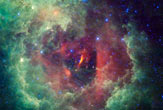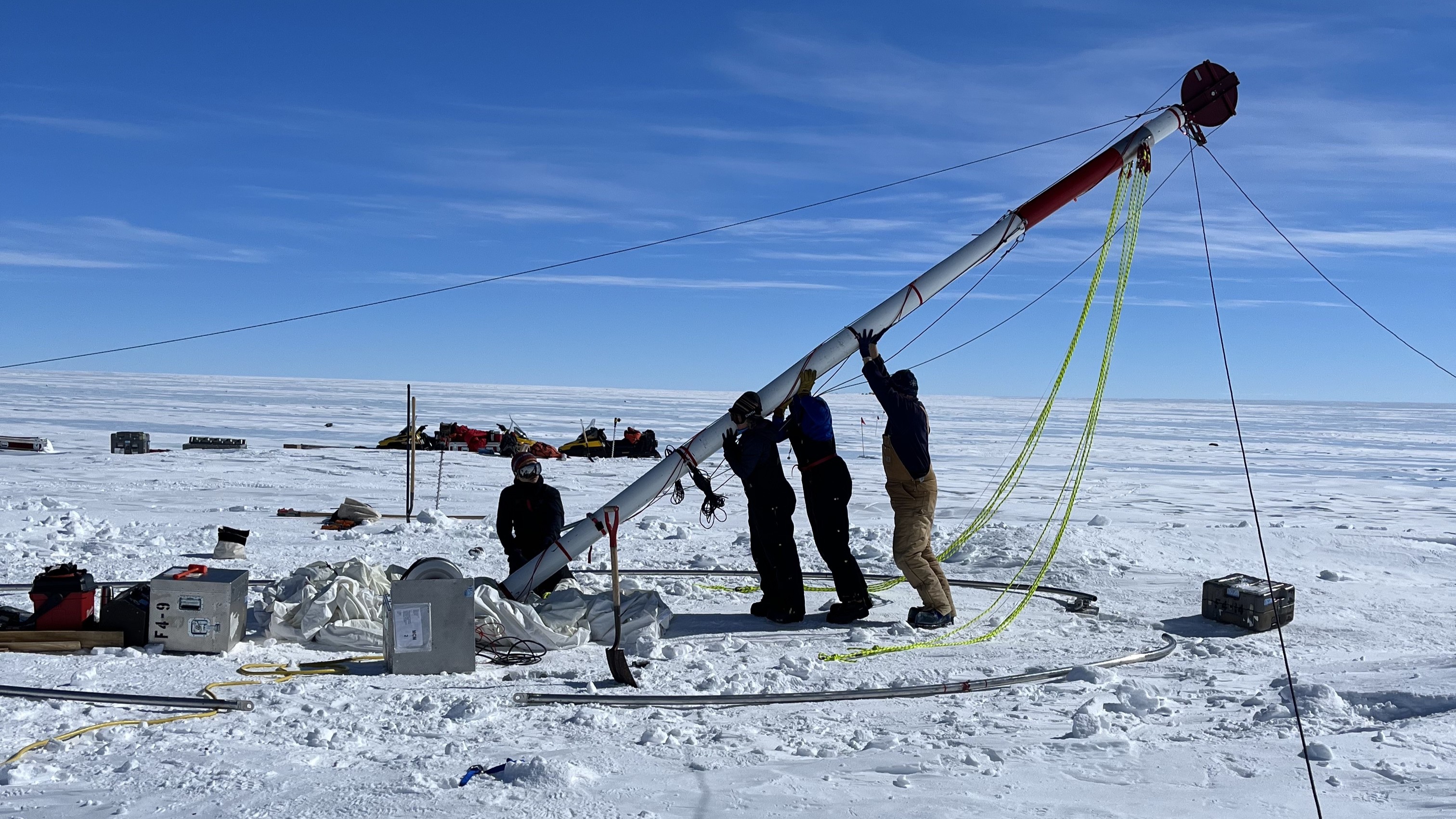New Cosmic Photo Reveals Eye-Catching Rosette Nebula

A NASA space telescope has snapped a stunning photo of a huge, flower-shaped cloud of dust and gas about 5,000 light-years from Earth.
The Wide-field Infrared Survey Explorer (WISE) captured the new cosmic photo of the star-forming Rosette nebula, which is in the constellation Monoceros (or Unicorn) in our Milky Way galaxy. [New photo of the Rosette nebula.]
The nebula, also known as NGC 2237, has a cluster of young stars at its heart. The most massive of these stars produce huge amounts of ultraviolet radiation, and they blow strong winds that erode away the nearby gas and dust. This creates the large central hole seen in the image.
The streak at lower left is the trail of a satellite around Earth that crossed WISE's field of view as it snapped the multiple frames that make up the new image.
Although the Rosette nebula is too faint to see with the naked eye, it is visible through a small telescope or a good pair of binoculars. The English astronomer John Flamsteed discovered the Rosette nebula's central star cluster with a telescope around 1690, but the nebula itself was not identified until astronomer John Herschel observed it almost 150 years later.
The image is a four-color composite created by all four of WISE's infrared detectors. Color is representational: blue and cyan represent infrared light at wavelengths of 3.4 and 4.6 microns, which is dominated by light from stars. Green and red represent light at 12 and 22 microns, which is mostly light from warm dust.
Scanning the infrared sky
Get the world’s most fascinating discoveries delivered straight to your inbox.
The new image is just one tiny piece of the massive sky atlas WISE telescope is assembling. The satellite, launched in December 2009, is scanning the entire sky in infrared light during its 10-month mission. Astronomers hope WISE will uncover objects never seen before, including the coolest stars and some of the darkest near-Earth asteroids and comets.
WISE completed its main mission, a full scan of the entire sky, in July. So far, the telescope has captured more than 1.5 million images, uncovering hundreds of millions of objects, including asteroids, stars and galaxies. It has observed more than 29,000 previously unknown asteroids to date, more than 100 near-Earth objects and 15 comets.
WISE is still scanning, but it has encountered some age-related hiccups. A few weeks ago, NASA reported that the telescope's secondary coolant tank is depleted, causing the telescope to heat up slightly. WISE relies on super-cold liquid hydrogen coolant to chill its infrared detectors, but it does not have an unlimited supply of the stuff.
One of WISE's infrared detectors stopped producing useful data once the telescope warmed from 12 Kelvin (minus 438 degrees Fahrenheit) to 31 Kelvin (minus 404 degrees F).
But the primary tank still has plenty of coolant, NASA officials said. In May, a NASA panel rejected a proposal to extend WISE's mission for an extra three months.

